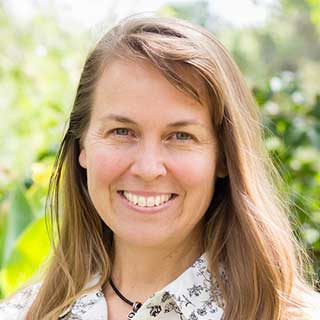Sequence 1: Stem cell understanding ⟩ Module 2:
Types and functions of stem cells
The second module within Sequence 1 focuses on developing an understanding of the different types and function of stem cells.
Summary
VCE Biology (2016 -2020)
Unit 2, Area of Study 1, Outcome 1, VCE Biology Study Design
Key Knowledge
Cell growth and differentiation
- the types and function of stem cells in human development, including the distinction between embryonic and adult stem cells and their potential use in the development of medical therapies
Duration

Student learning outcomes
On completion of this module, students will:
- be able to describe the basic role of stem cells in the human body: including self-renewal and differentiation.
- know that stem cells are ‘unspecialised’ and give rise to every different cell in the body.
- be able to describe and distinguish between the role of pluripotent stem cells (including embryonic (and induced pluripotent stem cells) and tissue stem cells (or adult stem cells).
Teacher background information
The core resources for this sequence are from the: National Stem Cell Foundation of Australia, Teacher’s Kit
Download Stem Cell Teacher’s KitNote: Since the Teacher’s Kit was written a number of the links to which it refers have become inactive. It nevertheless remains an excellent resource.
The relevant background reading and activities from this Teacher’s Kit are referenced in the white boxes below. Further background material and alternative activities are highlighted in yellow.
Background material
Teacher's Kit (pp.24-25)
Chapter 2 - The different types of stem cells
Background information on the different types of stem cells and their function.
Website
University of Utah: Stem cell quick reference
Presented in poster format this reference guide examines somatic or adult stem cells, embryonic stem (ES) cells and induced pluripotent stem (IPS) cells. It introduces the different stem cells, identifying their potential as therapy, special and ethical considerations. There is a small section on therapeutic cloning.
Website
EuroStemCell website
Access to a range of informative and scientific videos, films and teaching resources have been made available by the EuroStemCell organisation.
Highlighted are the following videos:
- Cell Fate: Journeys to specialisation (23:02 min)
- Stem cells - the future: an introduction to iPS cells (16:43 min)
Website (Interactive)
University of Utah: The nature of stem cells
A series of narrated slides that provide a simple description of changing cell potency and cellular differentiation from fertilization through the development of the embryo and foetus.
Website
Wellcome Trust: Stem cells
The Welcome Trust site is an authoritative UK website that provides teachers with links to current summaries of research findings, often with links to publications. Search for “stem cells” for information including:
- Properties of stem cells
- Types of stem cell
- The ethics of stem cells
- Medical uses of stem cells
- Medical potential of stem cells
Video
TED-Ed: What are stem cells?
Introductory animation with an easy to understand narration relating to basic stem cell science and the individual. Incorporates eight review questions (also applies to Module 4).
Video
What are embryonic stem cells? Narrated by Dr Janet Rossant
In this Stem Cell Network video, use is made of animation to explain the basics of embryonic stem cells. Limited detail is provided but the video is suitable for sharing with students who can then uncover additional information from other sources.
Video
What are induced pluripotent stem cells? Narrated by Dr Mick Bhatia
In this Stem Cell Network video, the focus is on introducing induced pluripotent stem (IPS) cells using the animated format. Limited detail is provided but the video is suitable for sharing with students who can then uncover additional information from other sources.
Activities
Teacher's Kit (pp.26-40)
Activity 2.1.3 - The two main categories of stem cells: Research task
This research task positions students to consider the role and function of the different stem cell types and to compare the benefits and limitations of each. Students are required to view a Stem Cell Channel Video and use fact sheet to complete a table-based graphic organiser handout. The tasks are of various complexity.
Teacher's Kit (pp.41-43)
Activity 2.2.1 - Visualising thinking on stem cells: Mind map
This activity involves summarising and creating a visual representation of thinking from activity 2.1.3 through the creation of a mind map.
Teacher's Kit (p.47)
Activity 2.3 - Consolidating knowledge about stem cells
This activity adopts a drama-based pedagogy and requires students to create a role-play representation of the different stem cell types. Alternatively or additionally, students could develop a poster in order to consolidate knowledge learnt.
Teacher's Kit (pp.48-50)
Activity 2.4 - Potent lingo
This activity focuses on exploring and decoding the scientific language pertaining to stem cell science. Students are required to work through the associated handout.
Next module: The role of stem cells in …
 Contemporary VCE Biology
Contemporary VCE Biology


